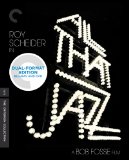| Reviews & Columns |
|
Reviews DVD TV on DVD Blu-ray 4K UHD International DVDs In Theaters Reviews by Studio Video Games Features Collector Series DVDs Easter Egg Database Interviews DVD Talk Radio Feature Articles Columns Anime Talk DVD Savant Horror DVDs The M.O.D. Squad Art House HD Talk Silent DVD
|
DVD Talk Forum |
|
|
| Resources |
|
DVD Price Search Customer Service #'s RCE Info Links |
|
Columns
|
|
|
All That Jazz
Bob Fosse tells the story of "Bob Fosse"
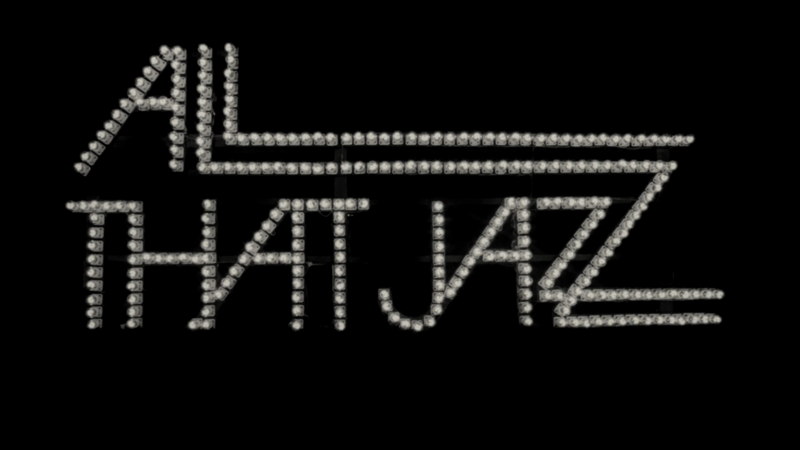
Loves: Musicals, the Criterion Collection, Visual spectacle, meta movies
Likes: Dance, Roy Scheider, Bob Fosse
Dislikes: The lack of musicals in modern film
Hates: The dancer lifestyle
The Movie
I'm sure it has something to do with Robin William's recent passing, but when I think of Bob Fosse, I can't help but think of him on the list of choreographers reeled off by Armand in The Birdcage. It makes sense to think of dancing when you think about Fosse. That's who Fosse was: dance. However, as great a dancer and choreographer as he was, his contributions to the world of film are almost as impressive, with All That Jazz, a semi-autobiographical tale that blends a toe-tapping musical with a post-modern head trip to create a classic work of art from the very first frames, a movie that earned him a seat amongst the all-time greats.
Joe Gideon (Roy Scheider) is a hyper-driven choreographer who, while putting together a new stage show, is also putting the finishing touches on his film about an acerbic comedian. If you know about Fosse's life, that's his story to a T around the time he was making the film Lenny with Dustin Hoffman. However, pushing so hard for success has a cost, and that cost is Fosse's life, in a number of ways, as his relationships crumble, including those with his wife, daughter and girlfriend, his health falters and his show sits on the precipice of ruin. All That Jazz shows all the different aspects that make Gideon the genius he is, but details all the negatives that go with it, creating a harrowing story that lacks in any real heroes.
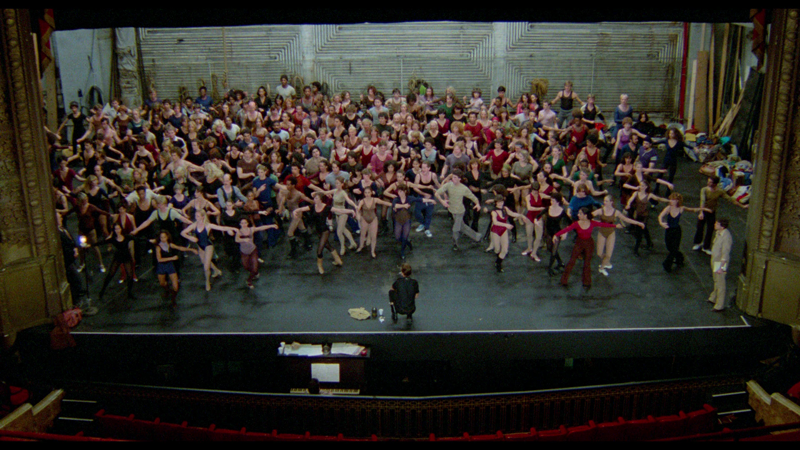
Naturally, with this being a Fosse film about dancing, there's some incredible musical moments. Though Scheider wasn't a dancer, he was surrounded by some amazing talent, including the great Ann Reinking as his girlfriend, Leland Palmer as his wife, Sandahl Bergman as one of his lead dancers and Ben Vereen in a role better seen than explained. The result is some of the most entertaining dance numbers in film history, whether it's Reinking and young Erzsebet Foldi pairing up for a living room boogie to "Everything Old is New Again," Reinking, Foldi and Palmer putting on an epic performance for a struggling Gideon or Gideon's dancers delivering an intensely erotic and intense display. I've never been a big modern/Broadway dance number fan (I'm more of a Celtic or tap guy) but there is no denying the skill on display, with Reinking being particularly spellbinding as she glides and gyrates.
In trying to get the camera's attention, Scheider is battling a ton of spectacle in his role as Gideon, but he commands the screen with his intensity as he's put through the wringer. Playing the part, which requires him to be at times funny, at times sad, at times gruff, often in short order as the movie slips through time and place, Scheider is wonderfully deft at transforming, and imbuing this force of nature with humanity, so the audience can find themselves pulling for him, even when he's not the most likeable person in the frame. That's part of what makes this such a fascinating film. It's the story of man and all his flaws, and how they allow him to reach for greatness.
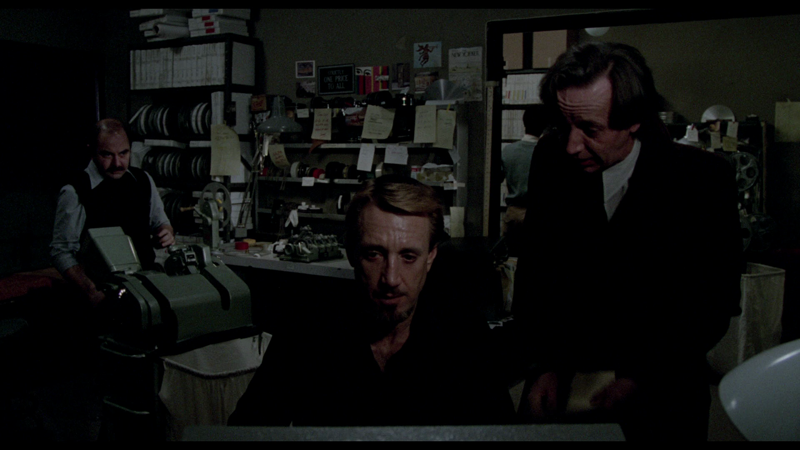
The Discs
All That Jazz arrives on three platters, two DVDs and one Blu-Ray (the last of Criterion's dual-format releases), which are held (along with a booklet) in Criterion's standard thick, clear Blu-ray case, with two-discs overlapped on the right side, in a hub design that protects them well. The reverse of the cover art offers a great photo of Fosse demonstrating a dance move for Scheider. The simple, timeless Criterion menu, which includes the dramatic film's title lighting sculpture and random selections from the soundtrack, gives the choice to watch the film, navigate the timeline, select scenes and check out the special features. There are no audio options, but subtitles are available in English SDH. Once again, Criterion has provided all the extra material in both formats, which necessitated the second DVD.
The Quality
Though the 1.85:1, 1080p, AVC-encoded transfer on this one looks tremendous, loaded with beautiful detail (when not purposefully soft) and painted in a perfect coat of grain that exemplifies the era, Criterion doesn't get the credit, as this one, struck from a new 4K digital restoration off the original negative, is courtesy of Twentieth Century Fox, working with the Academy Film Archive and the Film Foundation. The color doesn't jump off the screen the way you'd expect for a musical, but this isn't the kind of musical you'd expect, and the dull tones capture the mood perfectly, while the deep black levels keep the darker moments from bleeding out. Overall, the image is basically spotless, with no notable flaws, and digital distractions are not a concern.
All That Jazz arrives with a unique 3.0 DTS-HD Master Audio track, which utilizes the three front channels. There's nothing to complain about in this presentation, as the dialogue is clear and crisp, and the music is sufficiently powerful, delivering the many wonderful numbers with the right amount of oomph. There is a lack of depth though, with everything sitting on just about the same plane (and apparently, according to one of the extras, Fosse has personal issues with the sound.) The thing is, that actually works in the film's favor, as it helps sell the blending of reality experienced over the course of the movie. When audio is the focus, like one particularly impressive bit of measured design at a table read, the track does not disappoint in the least.
The Extras
Up first is a feature-length audio commentary courtesy of editor Alan Heim, who took home an Oscar for his work on this film. The track, recorded in 2007 for that year's DVD release, is unfortunately riddled with dead air as Hein gets caught watching the film (it was the first time he'd seen the film in some time.) When he does have something to say though, it's certainly interesting, as he talks about collaborating with Fosse, his editing on the film and the theory behind the filmmaking.
However, he's not done discussing the movie, as a new 15:19 interview lets him make up for the spaces in his commentary. The chat is mainly about the art of editing and working with Fosse, with whom he collaborated on four films. The discussion centers around All That Jazz, including the film's engrossing opening scene, its method of storytelling and the goal of the editing, but touches on their other films as well, particularly the work on Lenny and how that relates to Jazz. There's some repetition from the commentary, which makes this something of a trimmed-down, tightened-up version of that track, so if you can only pick one, this is the way to go.
Heim's recollections are followed by scene-specific commentary by Scheider, who recorded his contribution in 2001 (seven years before he passed), which was originally on the 2003 DVD. In total, Scheider chats over 34:40 of the film, sharing production details, thoughts about the film and some casting info about his part, including the content of his discussion he had with the actor who had the role before him. It's not entirely screen-specific, as some scenes play under unrelated riffs, including talk about his interactions with Fosse and his view of the film's legacy, but it's an informative and interesting listen.
This set includes a pile of featurettes, both new and archival, some of which were found on previous releases. "Reinking and Foldi" (33:59) is an in-depth conversation between the two actresses, who played mother and daughter in the film, focusing on their shared experience, especially the dance scenes they performed together, and their thoughts on Fosse, his style and his career. It's a very casual, yet thoughtful chat, providing lots of insight into the world of dance (as both were trained dancers) and the director.
Author Sam Wasson, who write a biography on Fosse, sits down for a new 20:43 interview that sheds even more light on the dance icon. This featurette is a excellent addition to the set, as Wasson does well by the viewer by explaining the differences between Fosse's real life and the fictionalized version seen in Jazz. Bonus features that serve as a bridge between reality and the movies tend to be some of the most interesting, and this piece, which tracks the path of Fosse's unique career path and the development of All That Jazz, is no exception.
A few older pieces from previous DVD offer up more interviews, like 2007's Portrait of a Choreographer, a 22:45 documentary, featuring thoughts from Liza Minnelli, dancer Sandahl Bergman, Chicago director Rob Marshall, Hairspray director Adam Shankman and a number of well-known choreographers. What's nice here is the focus isn't just on Fosse, as Reinking gets her own respect as well.
Another 2007 featurette, "The Soundtrack: Perverting the Standards" (7:50) focuses on the film's music, with praise and insight from composing stars like Glen Ballard, Mark Mothersbaugh, Diane Warren and Jerry Casale (wearing his Devo hat), as well as additional thoughts from Minnelli and Heim. Their praise is effusive, but they also have the background and experience to explain just what's happening with the songs and why they work so well. The look at music continues in the quick (3"36) "The Making of the Song ‘On Broadway,'" which lets musician George Benson talk about the origin of his famed song, and the music theory behind it, which sets the stage for the film in its incredible first scene.
The set moves into archive mode with a series of old interviews, starting with a 1980 episode of Tom Snyder's late-night show Tomorrow (31:51), where Fosse is interviewed alongside fellow choreographer Agnes de Mille. Snyder was a great interviewer in his day, and this chat about dance and Broadway, how TV has helped grow the art and the eroticism in All That Jazz. Intriguing and funny (especially de Mille), it's a great, open conversation.
From late-night New York, the set moves to England, or rather England moves to New York, as Melvyn Bragg's The South Bank Show visits Fosse for a 1981 interview that runs over 27 minutes. This is a bit of a straightforward dialogue that serves as a fine overview of the director's career, as Fosse talks about his history in dance and the differences between theater and movies. He then sits down with Gene Shalit for a 26:14 interview from 1986 (not long before Fosse died.) A bit more retrospective, due to the time it was recorded, it's also a tad morbid, as Shalit asks him about his health, his smoking habit and his death. For anyone who only knows Shalit as the pun-slinging muppet he eventually became, this is a bit of a surprise, as he does a good job of grilling Fosse.
The last bit of archival material falls under the title of "On the Set," which is made up of two parts: Fosse directing (7:58), where he's putting together the classic opening scene, and an interview with Scheider (3:54), where the actor is asked about working with Fosse and the role of Gideon. The Fosse footage is certainly welcome, as it's only opportunity to see how Fosse worked, rather than be told about it.
Wrappping up the on-disc extras is the film's theatrical trailer (1:41), built around the movie's finale, and which gives away too much of the film.
As is the Criterion norm, you get a beautifully-designed 32-page booklet, which includes a few set photos, gorgeously stark artwork blending themes from the film and the iconic lights design from the titles and an essay about Fosse from The New Yorker writer Hilton Als.
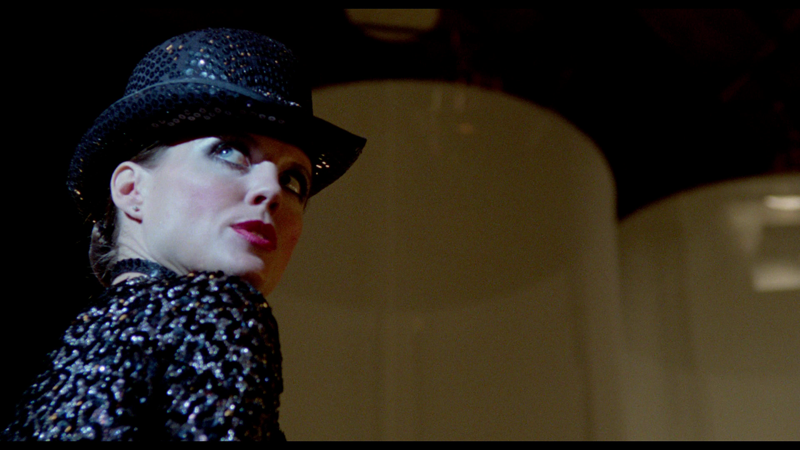
The Bottom Line
The phrase "before his time" was made for Fosse's work on this film, the proof that the man doesn't get anywhere near the respect he deserves as a filmmaker, probably because that limited output is overshadowed by his success as a choreographer. All That Jazz is filmmaking at its most creative and imaginative, with crowd-pleasing dance numbers for those who struggle with the more cerebral material and a touching core that grounds its flights of fancy. Criterion, with aid from Fox, has given the movie a fitting presentation and a plethora of bonus material that serves as a tribute to Fosse and his work. Even if you don't like musicals, it's a sight to behold and one all serious film fans must see.
Francis Rizzo III is a native Long Islander, where he works in academia. In his spare time, he enjoys watching hockey, writing and spending time with his wife, daughter and puppy.Follow him on Twitter
*The Reviewer's Bias section is an attempt to help readers use the review to its best effect. By knowing where the reviewer's biases lie on the film's subject matter, one can read the review with the right mindset.
|
| Popular Reviews |
| Sponsored Links |
|
|
| Sponsored Links |
|
|
| Release List | Reviews | Shop | Newsletter | Forum | DVD Giveaways | Blu-Ray | Advertise |
|
Copyright 2024 DVDTalk.com All Rights Reserved. Legal Info, Privacy Policy, Terms of Use,
Manage Preferences,
Your Privacy Choices | |||||||









